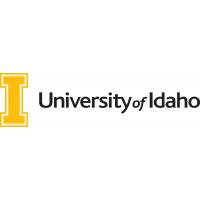Forests mitigate climate change by sequestering massive amounts of carbon, but recent increases in wildfire activity are threatening carbon storage. Currently, our understanding of wildfire impacts on forest resilience and the mechanisms controlling post-fire recovery remains unresolved due to a lack of empirical data on mature trees in natural settings. Here, we quantify the physiological mechanisms controlling carbon uptake immediately following wildfire in mature individuals of ponderosa pine (Pinus ponderosa), a wide-spread and canopy-dominant tree species in fire-prone forests. While photosynthetic capacity was lower in burned than unburned trees due to an overall depletion of resources, we show that within the burned trees, photosynthetic capacity increases with the severity of damage. Our data reveal that boosts in the efficiency of carbon uptake at the leaf-level may compensate for whole-tree damage, including the loss of leaf area and roots. We further show that heightened photosynthetic capacity in remaining needles on burned trees may be linked with reduced water stress and leaf nitrogen content, providing pivotal information about post-fire physiological processes. Our results have implications for Earth system modeling efforts because measurements of species-level physiological parameters are used in models to predict ecosystem and landscape-level carbon trajectories. Finally, current land management practices do not account for physiological resilience and recovery of severely burned trees. Our results suggest premature harvest may remove individuals that may otherwise survive, irrevocably altering forest carbon balance.
Data Use:
License: Creative Commons Attribution (CC-BY 4.0)
Recommended Citation: Bryant, K., Kwon, H., Kolden, C., Stenzel, J., Mathias, J., Lynch, L., & Hudiburg, T. (2022). Data from: Boosts in leaf-level photosynthetic capacity aid Pinus ponderosa recovery from wildfire (Version 2.0) [Data set]. University of Idaho. https://doi.org/10.7923/CN15-JW37
Data and Resources
| Field | Value |
|---|---|
| Modified | 2022-09-15 |
| Release Date | 2022-09-15 |
| Publisher | |
| Homepage URL | |
| Identifier | 4d083c78-9656-403d-8ce9-c01ccdad69d8 |
| Spatial / Geographical Coverage Area | POINT (-121.967 44.06667) |
| Spatial / Geographical Coverage Location | Cascade Range in central Oregon USA |
| Temporal Coverage | Tuesday, September 1, 2020 - 00:00 to Friday, August 20, 2021 - 00:00 |
| Language | English (United States) |
| License | |
| Granularity | Monthly/seasonal, tree/site-level |
| Author | |
| Contact Name | Kelsey Bryant |
| Contact Email | |
| Public Access Level | Public |
| DOI | 10.7923/cn15-jw37 |


![[Open Data]](https://assets.okfn.org/images/ok_buttons/od_80x15_blue.png)